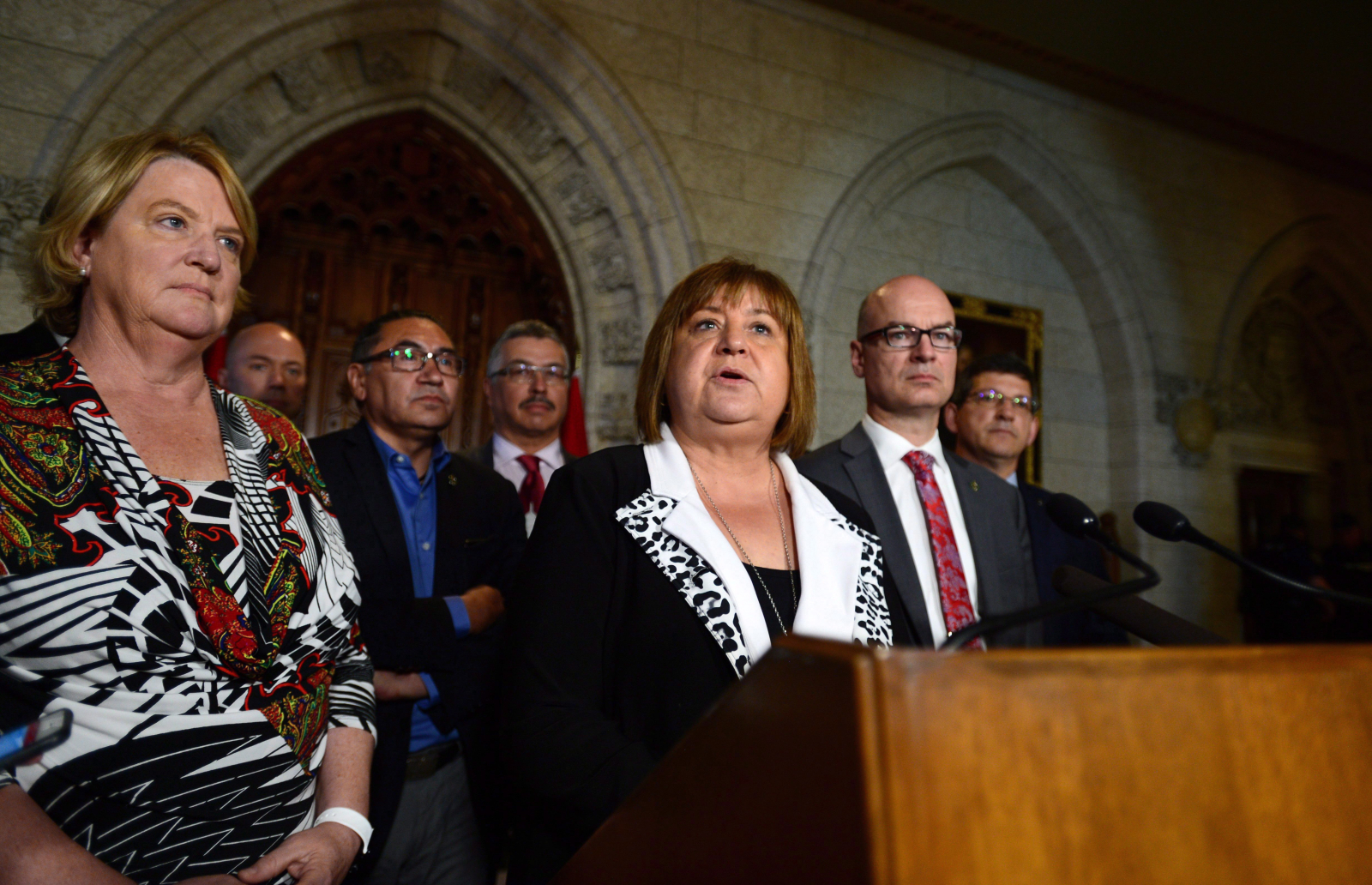
MaryAnn Mihychuk, Chair of the Standing Committee on Indigenous and Northern Affairs, speaks in the House of Commons about their report on Indigenous suicides on June 19, 2017. THE CANADIAN PRESS/Sean Kilpatrick
Note: This content may be emotionally difficult. The Hope For Wellness help line is 1-855-242-3310 or via online chat, Additional supports are available through We Matter.
A new report on Indigenous suicide in Canada has generated the most comprehensive picture of the crisis to date, despite health authorities continuing not to collect data about the problem.
Released at the end of June, the Statistics Canada report titled “Suicide among First Nations people, Métis and Inuit (2011-2016)” found that, overall, Indigenous people in Canada die by suicide at a rate three times as high as non-Indigenous Canadians.
While comprehensive, the report acknowledges there are limitations to the findings that likely result in underestimations of the actual rates. The report’s analysis includes a number of socio-economic factors, as well as comparative differences based on age, sex and location — on or off reserve.
The lead researcher of the report, Mohan Kumar, said he wants readers to remember that for each of the numbers in the report “there is a person behind them, and their deaths meant an incredible loss to family, friends, community and the society at large.”
He also contextualizes the findings in light of existing research that shows how aspects of colonization contribute to the Indigenous suicide crisis. So that the high rates, he says, shouldn’t be taken as indicative of personal, community or cultural failings.
Canada doesn’t track suicides specifically by Indigenous identity, and the process that Kumar and co-researcher Michael Tjepkema used to overcome this is important to look at, as are the limitations inherent to these findings. The findings are estimations not full counts, as they’re based on only a sample portion of the full population, and there are some population groups not surveyed.
But as Indigenous researchers Roland Chrisjohn and Shaunessy McKay wrote in Dying To Please You: Indigenous Suicide in Contemporary Canada, their 2017 book on the suicide crisis, discourse about the problem and solutions is often unhelpful and not evidence-based: “It sounds like drumbeats of a PR bandwagon, like Native people are being recruited to a mainstream viewpoint rather than being convinced with real data; with all parties repeating a mantra over and over again until they parrot it without any real understanding.”
Thus, the Statistics Canada report’s contributions in terms of new, fuller data analysis are important.
The report’s central finding — that First Nations people die by suicide at three times the rate of non-Indigenous Canadians, Inuit at nine times the rate, and Métis at two times — illustrates a crisis but is not likely to surprise those familiar with previous statistics. For those unfamiliar, it puts Inuit among the people with the highest rates of suicide anywhere in the world.
A Statistics Canada report found that Indigenous people die by suicide at a rate three times as high as non-Indigenous Canadians. But the report acknowledges there are limitations to the findings that likely result in underestimations of actual rates
The report examines each of the three groups separately, and is based on 2011 populations, when the census had 851,560 people self-identify as First Nations, 59,445 as Inuit and 451,795 as Métis .
The report estimates that there were 1,845 total deaths by suicide of the Indigenous population in Canada from May 10, 2011, through Dec. 31, 2016. This total consists of 1,180 First Nations people, 250 Inuit and 415 Métis.
Looking at it side by side with murder data can help contextualize the scale of the problem.
For the five years since StatCan started tracking homicides by Indigenous identity, there have been 710 recorded Indigenous victims of homicide. The number of estimated suicides from the StatCan report is approximately two and a half times larger, though it applies to a slightly longer period.
